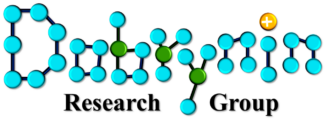Yuan Tian, Heyi Liang, and Andrey V. Dobrynin
Self-propelled elastic shells capable of transducing energy to rolling motion could have potential applications as drug delivery vehicles. To understand the dynamics of the nanoscale size elastic shells, we performed molecular dynamics simulations of shells filled with a mixture of active and passive beads placed in contact with an elastic substrate. The shell skin is made of cross-linked polymer chains. The energy transduction from active beads to elastic shell results in stationary, steady rolling, and accelerating states depending on the strength of the shell–substrate adhesion and the magnitude of a force applied to the active beads. In the stationary state, the torque produced by a friction (rolling resistance) force in the contact area balances that due to the external force generated by the active beads, and the shell sticks to the substrate. In the steady rolling state, a rolling friction force balances the driving force, and the shell maintains a constant rolling velocity. The scaling relationship between the magnitude of the driving force and the shell velocity reflects a viscoelastic nature of the shell skin deformation dynamics. In the accelerating state, the energy supplied to a system by active beads exceeds the energy dissipation due to viscoelastic shell deformation in the contact area. Furthermore, the contact area of the shell with a substrate decreases with increasing shell instantaneous velocity.

